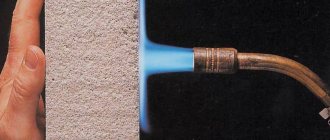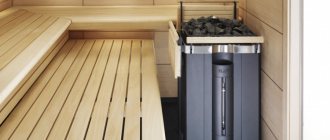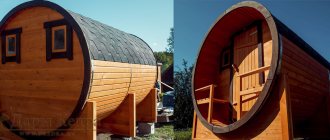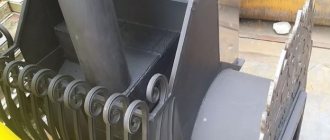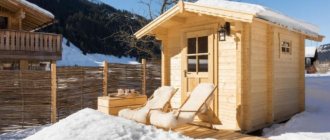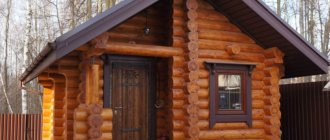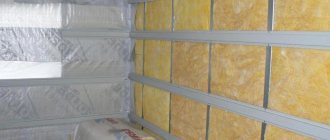In all steam room or home bathhouse projects, a separate article includes a list of fire-resistant and heat-resistant sheets, slabs and sheathing. Non-combustible materials for a bathhouse must be selected painstakingly and consistently, without haste or trying to save on trifles. As you know, saunas burn precisely because of attempts to replace fire-resistant sheet material for a bath with a cheaper heat-resistant lining, and this is far from the same thing.
Metal protection is considered a universal solution
Basic requirements for refractory materials
There are at least a dozen points and places where heat-resistant protection is required in a modern bathhouse. The shortest list for installing fireproof and fireproof cladding looks something like this:
- Furnace base and box;
- The walls of the bathhouse around the stove or heater;
- Chimney, passage unit through the ceiling;
- An area on the floor in front of the ash pan and the furnace firebox;
- Screens and tunnels in wooden walls, if the stove in the bathhouse is loaded from an adjacent room or even from the street;
- Elements for fastening the chimney inside the bathhouse.
In any case, the materials used for fire protection equipment must have fire-resistant qualities and withstand prolonged heating without changing their physical and chemical characteristics. Heat-resistant bath material used to protect wooden walls from infrared radiation must withstand heating up to 400°C without releasing decomposition products and without interacting with oxygen and water vapor in the air.
Heat-resistant mineral fiber material
Heat-resistant materials in the bathhouse are used to backfill the thermal insulation of the chimney and arrange screens around the stove body. With good heating, the screen and the outer surface of the stove can heat up to almost 1000°C.
Fireproof silicon fiber mat
The third type, fireproof materials for a bath made of sintered metal oxides, are used for laying out parts and structural elements of the furnace, as well as for the construction of floor heating, if part of the flue gases in the building are discharged through channels made of refractory clay in the underground.
Advice! Refractory bricks, canvas or granular backfill cannot be selected, as they say, by eye. Most of them have their own shelf life, which depends on storage and operating conditions.
A little about the terms
To avoid confusion about the properties and applications of materials, let's understand the terminology. There are non-flammable materials (NG), low-flammable materials (G1) and simply flammable materials (G2).
Non-combustible materials do not burn under the influence of ignition sources (sparks, open flames, electric discharge, etc.). At all. For example, reinforced concrete, stone, brick and some other building materials.
Weakly (difficultly) combustible materials are incapable of full combustion, however, they burn. These are fiberglass, asphalt concrete, plasterboard, etc.
There are also fireproof and heat-resistant materials. Refractories can withstand exposure to open fire for a long time. They are used in furnaces for furnace lining. In relation to baths, these are fireclay bricks and fireclay masonry mortar. Heat-resistant ones can withstand high temperatures, but they may not be able to withstand open fire.
Fireproof materials for baths
The main functions of refractory blocks, sheets, and backfills are to maintain shape and prevent deformation of the structure. They are not able to stop or delay the flow of heat and prevent the possible occurrence of a fire. For these purposes, fire-fighting materials are used that do not have such high heat-resistant or fire-resistant qualities, but are capable of insulating the heat and heat emanating from the stove in the bathhouse.
When arranging and finishing the most heat-loaded areas of the bathhouse, three types of materials are used:
- Fire-resistant fiber sheets and fabrics;
- Blocks made of porous bricks with very low thermal conductivity;
- Backfills and fiber packings.
Heat-resistant materials for a bath are needed primarily to isolate a possible source of local overheating on a wall or wooden floor, which most often causes a fire. In this case, part of the material is used as temporary protection; it is enough if the source is blocked for 10-15 minutes, until the automatic circuit protection system for electrical wiring is triggered.
Asbestos cardboard is slightly soaked before laying in the bath
Asbestos sheet for bath
Currently, the idea of using asbestos is unpopular. Fire insulation and thermal protection based on it are being actively replaced by manufacturers of new fire-resistant sheets for baths based on basalt, vermiculite and fiberglass, often undeservedly.
Asbestos-based boards and fabrics have certain advantages unique to them:
- If the heating of the surface does not exceed the 550°C specified by GOST, the thermal protection can last in a humid bathhouse atmosphere for at least 20-25 years;
- The fiber does not age or degrade when in contact with a humid atmosphere, and can withstand prolonged exposure to alkalis and hot carbon monoxide.
At the same time, the asbestos board is not a full-fledged fireproof material; at temperatures above 600 ° C, asbestos fiber interacts with air oxygen and gradually burns out to a powder state.
Important! Asbestos can only pose a certain danger in the form of dust or fluffy fibers; when bound, it is a completely inert material.
Asbestos sheet is used for thermal insulation of the stove base, body parts and chimney. As an addition to fireproof protection, KAON1 cardboard with a thickness of 2-10 mm can be used. The KAON2 brand is not used for thermal protection of wooden and flammable cladding.
The asbestos board used for the bathhouse is 98% pressed fiber, so the material is strong and at the same time flexible, not afraid of temperature deformation; it can be used to insulate the walls of stoves, firebox tunnels and chimney parts.
Fireproof fabric for baths made of quartz fibers
Metal protective screens
Cladding with alloy metal sheets is used to protect the walls of the steam room and shield the body of brick and steel stoves. Stainless steel can also be used; it best dissipates powerful heat flows emanating from the heater and firebox, but due to its high cost and huge coefficient of thermal expansion, stainless steel is used only on steel stoves.
In fact, this is the only option for a universal heat-resistant material for a bath, with which you can build thermal protection in any part of the steam room.
For your information! Due to their high thermal conductivity, stainless steel and alloy steel must be used with a backing made of asbestos or basalt fiber.
In this case, sheet metal is sheathed on that part of the wooden walls inside the bathhouse that are directly adjacent to the parts of the stove or chimney.
Brick screens
The laid outer contour around the furnace body perfectly dissipates heat and at the same time increases the fire-resistant qualities of the entire structure. To construct the screen, ordinary hollow bricks made of lean clay with a high content of aluminum oxide are used. This material is not suitable for building a sauna stove due to the large number of pores and microcracks, but in terms of fire-resistant qualities it is only slightly inferior to fireclay blocks.
Brick screens in the bathhouse provide the best fire-resistant performance
The screen is laid out on a special fireplace mortar; due to its high porosity, the brick adheres well to the masonry material and does not crack or chip parts of the block even with strong thermal shocks.
Non-combustible wall coverings
The wooden walls of the steam room, especially the part that is located in close proximity to the stove, are considered the most vulnerable to the red-hot heat emanating from the firebox or chimney. There are several ways to solve the problem:
- Installation of fireproof wall cladding. Most often these are chrome-plated or aluminum-clad metal sheets laid on the surface of the walls of the bathhouse on ceramic bushings. Between the wood and the metal, a ventilation gap of at least 2.5-3 cm wide is left, inside which basalt or asbestos cardboard must be placed;
- Facing with vermiculite or mineralite slabs. Both materials have very low thermal conductivity, so the sheets can be laid with a small thermal gap of 2-3 mm.
Bushing mounting
Minerite is also a good heat-resistant material for baths, which can be used to shield ceramic surfaces that heat up to high temperatures. The advantage is that the refractory lining and the surface of the furnace have a coefficient of thermal expansion of approximately the same order. Therefore, there is no need to worry about cracks and deformations, as is the case with stainless steel.
In theory, sheets made of fiberglass and magnesium base can be used to house a bath; they have excellent fire-resistant characteristics, but due to hygienic and sanitary parameters, their use requires metal shielding.
Magnesium material is better than others for roof passages
Reflective wall cladding
The idea of lining the walls and floor of the bathhouse around the stove with metal does not seem to be the most successful, judging from the point of view of aesthetics, style and design. But this is an excellent way to reflect and redirect part of the infrared radiation falling on wooden walls inside the steam room of the bathhouse.
It is clear that if a heater is installed on the stove, then some of the boiling water will inevitably fall on the walls of the bathhouse. Therefore, metal in such a situation will be the best solution; in addition to fireproof and heat-resistant qualities, steel has excellent corrosion resistance and easily withstands the most severe thermal shocks.
Causes of fires
During operation, the bath structure itself and its individual elements are systematically exposed to high temperatures. And in some cases, this exposure leads to fire.
The main reasons for the appearance of an open fire are:
- Errors when installing a sauna stove. If the heating surfaces are located too close to the wooden walls or shelves of the bathhouse, or if coals and flames are released from the firebox due to improper operation, a fire is almost inevitable.
- In addition, it is very important to ensure timely maintenance of the stove and cleaning of the smoke exhaust ducts.
- It is also important that the body of the stove and chimney does not have cracks. Cracking of cast iron and steel models is especially critical, so they must be inspected periodically.
Photos of the consequences of fire safety violations
Note! If you are using an electric heater, you should protect it from short circuits by connecting it to the distribution panel through a residual current circuit breaker.
- However, the main reason why a fire can start in a bathhouse is the use of unsuitable materials in the finishing. Contact of untreated wood or plastic with a heated surface will, at best, cause smoke, and at worst, lead to burnout of the entire structure.
Analyzing the list above, we can see that it is still possible to protect buildings from fire. And the best way to ensure such protection is to strictly follow the standards, the main one among which will be SNiP 2.01.02, which contains the basic fire safety standards in construction.
Protective ceiling coatings
For thermal protection of the ceiling, mineral wool sheets with aluminum foil are usually used. The thermal load on the ceiling is small, so the choice of material is determined by fire characteristics.
At the point where the chimney pipe passes through the ceiling, it is sealed with a refractory backfill; expanded clay or granulated vermiculite can be used. For steam rooms and bathhouse buildings, in which heating is provided by electric heating elements, the ceiling is lined with heat-resistant plasterboard or mineralite.
Impregnation for shelves
Most decorative and impregnating materials for benches are made on an organic varnish or oil base. With the exception of organosilicon, they are flammable and flammable, so shelves and benches, floor boards are impregnated with protective salts and dried thoroughly before being impregnated with oil or heat-resistant polyurethane or acrylic varnish.
After treatment, the surface must be thoroughly dried to maintain its fire-resistant qualities.
Often, to improve the fire-resistant characteristics of shelves, complex preparations from Tikkuril or Belinka are used, which contain special inhibitors that reduce the flammability of wood. In this case, the part of the shelves that is not used for sitting can be impregnated with fire-resistant silicone oils.
Heat resistant cables
For electrical wiring equipment in conditions of high temperature and air humidity, fire-resistant channels or pipes made of asbestos-epoxy material are traditionally used. This solution provides reliable short circuit protection.
Fireproof cable for sauna with asbestos braid
But there is another problem: the channels do not protect the wiring in the bathhouse from heating and temperature degradation. Therefore, experts recommend using specialized SIAF cables, for example, N2GFAF insulated with heat-resistant silicone.
For wiring inside the house, the best solution is to lay the cable in a pipe with fire-resistant backfill. Sometimes bathhouse owners simply cover the SIAF or RKGM 1*2.5 cable with an asbestos cord at least 4 mm thick and place it in a heat-resistant casing.
Is thermal insulation always necessary?
The need for shielding does not always arise. Spacious baths allow you to install heat sources according to standards. A certain distance between the stove and the walls/occupants makes additional protection unnecessary. But in small family steam rooms, following the norms makes the bath idea impractical - every piece of space is important here.
Figure 2. Examples of furnace locations and the distance between them and insulation
The illustrations show the recommended distance between thermal units and sauna walls. Whatever material the stove is made of, a distance to the opposite wall of at least 1 m is considered safe. But the parameters are “ready” to shrink, provided that a thermal screen is created.
Thermal insulation for pipes
For reliable chimney insulation, it is best to use basalt wool. The material does not burn and does not emit harmful substances after the first firing. You can buy a ready-made sandwich pipe or make it yourself. The fireproof qualities of the insulation are so great that the walls burn through more often than the protection itself.
But it is worth remembering that fiber thermal insulation works properly only in the absence of conditions for condensation accumulation. This means that the thermal insulation layer must be ventilated, and a “dry” gap must be left between the wool and the central pipe, through which water vapor will leave the chimney as the bathhouse cools.
When is furnace wall insulation necessary?
If the stove is made of brick, or is located at a distance of more than 1000 mm from the wall, it does not make sense to carry out a full cycle of thermal insulation work. In these cases, it is enough to make a protective screen from foil on moisture-resistant kraft paper. It is important to know the gaps between the wall and stoves with different surface materials:
- it is recommended to move the stove, laid with a wall thickness of half a brick, 350-400 mm from the surfaces of the bathhouse,
- a metal stove, not lined with brick or a layer of thermal insulation, must be at least 1000 mm away from the walls,
- It is recommended to install a steel stove with an extended part of the firebox and protected by thermal insulation at a distance of 700 mm.
But most individual baths are small in size and it is not always possible to maintain the required clearances. Therefore, the optimal solution to the problem is to protect the walls and ceiling with a reliable layer of thermal insulation made of non-flammable, moisture-resistant materials.
Example of wall protection

